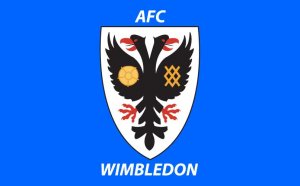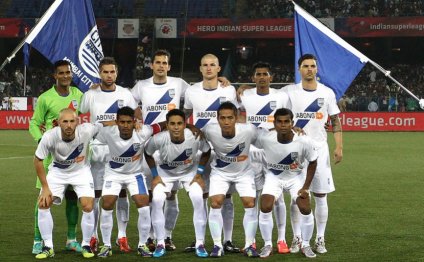
AFC Wimbledon Kits
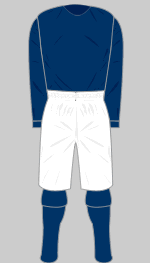
System History
Wimbledon Old Centrals
1889
1889-1893 n
1893-1894 letter
1895-1896 letter
1896-1897 n
Recorded as "green & black"
Wimbledon
1905
1905-1906 n
1907-1908 n
1918-1919 letter
Verification of top colour required
1919-1920 n
1920-1921 n
1923-1931 letter r
1935-1936 n
1946-1947 letter
1947-1948 r
1948-1949 letter
1951-1954 letter t
1954-1957
1957-1960 f n
1960-1961 letter
1961-1962 k n
1962-1963 b h n
1963-1964 q
1964-1966 p q
1966-1967 q
1967-1970 p q t
1970-1973 h q
1973-1974 q
1974-1975 u
Bukta
1975-1977 u
1976-1977 alt p u
Used just in glass games
Adidas
1977-1978 b h k-l
1978-1980 k l
1980-1981 l
Osca
1981-1982 c k
Mileta
1982-1983 o
Barralan
1983-1984 k
Spall
1984-1985 b g
1985-1986 p
1986-1987 m
1987-1988 d b i
Hummel
1988-1989 m
1989-1990 d
1990-1991 i r
Admiral
1991-1993 d i
Ribero
1993-1994 d i
Own brand name
1994-1995 b d
Core
1995-1996 d
Lotto
1996-1997 d
1997-1999 d i
1999-2000 i
Puma
2000-2001 b i
2001-2002 b
Patrick
2002-2004 b
Background
The extraordinary increase and fall of Wimbledon has couple of parallels in history of football. Created in 1889 as Wimbledon Old Centrals, they adopted title of Wimbledon FC in 1905. The club played on Wimbledon typical until 1912 when they moved into Plough Lane, their house for the next 75 years. Seven many years later on they joined up with the Athenian League, upgrading on Isthmian League in 1921.
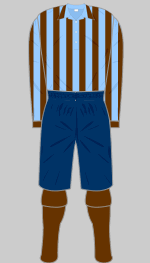 The club adopted blue and white in 1923 (the tints worn into the many years after the Great War have not been verified and are also predicated on their past chosen green and white). The crest followed at the time was based on the coat of hands for the Borough of Wimbledon, featuring a double headed eagle. It is a reference to a legend that Julius Caesar when made camp on Wimbledon popular. This crest was dropped sometime inside late-1950s but reappeared between 1970 and 1974.
The club adopted blue and white in 1923 (the tints worn into the many years after the Great War have not been verified and are also predicated on their past chosen green and white). The crest followed at the time was based on the coat of hands for the Borough of Wimbledon, featuring a double headed eagle. It is a reference to a legend that Julius Caesar when made camp on Wimbledon popular. This crest was dropped sometime inside late-1950s but reappeared between 1970 and 1974.
Wimbledon became one of many leading amateur clubs in the united states, winning the Isthmian League eight times. After winning the prestigious FA Amateur Cup in 1963, the club switched semi-professional and joined up with the Southern League.
An all-yellow strip trimmed in azure was introduced in 1975. Although azure became the principal colour of their pieces once more in 1981, yellow stayed made use of as a second colour.
In 1977, with three successive Southern League brands under their particular buckle and after an epic FA Cup run that included beating Burnley (after that in the 1st Division) at Turf Moor and using mighty Leeds to a replay, the Dons had been elected towards the Football League. For his or her inaugural period the team wore all-white and a new type of their particular old crest had been introduced.
After a moderate very first season, the club had been promoted and relegated four times in succession. In 1983 they started an extraordinary run that took them all the best way to the initial Division in 1986. The upstart club, dubbed the "Crazy Gang, " defied experts by completing in sixth place in 1987 and then, against all chances, beat Liverpool to win the FA Cup in 1988. Their strategies of playing long balls for their quick strikers with the uncompromisingly real defence of Vinnie Jones and John "Fash the Bash" Fashanu won few friends but confounded additional purist edges.
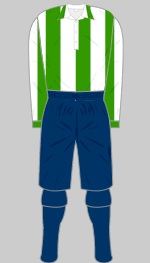 Within days of their FA Cup success, the club revealed intends to keep their cramped Plough Lane surface to move into an innovative new arena within their native borough of Merton. These plans found absolutely nothing: with Plough Lane unsuitable for redevelopment, the club marketed it well and relocated into Selhurst Park with Crystal Palace in 1991. Extremely, despite restricted resources and moderate attendances, the Dons carried on to thrive, finishing in the top nine between 1994 and 1997, if they also reached the semi-finals of the League and FA Cups. A move to Dublin had been floated but had been dropped if the FA and UEFA remarked that the club couldn't continue steadily to play within the Premier League when they had been located in the Republic of Ireland. This noted the beginning of the break down of the partnership involving the club and its particular local group of fans.
Within days of their FA Cup success, the club revealed intends to keep their cramped Plough Lane surface to move into an innovative new arena within their native borough of Merton. These plans found absolutely nothing: with Plough Lane unsuitable for redevelopment, the club marketed it well and relocated into Selhurst Park with Crystal Palace in 1991. Extremely, despite restricted resources and moderate attendances, the Dons carried on to thrive, finishing in the top nine between 1994 and 1997, if they also reached the semi-finals of the League and FA Cups. A move to Dublin had been floated but had been dropped if the FA and UEFA remarked that the club couldn't continue steadily to play within the Premier League when they had been located in the Republic of Ireland. This noted the beginning of the break down of the partnership involving the club and its particular local group of fans.
In 1999, the club's colourful owner Sam Hammam marketed Wimbledon to a Norwegian consortium whom setup Egil Olsen as manager. The newest owners were looking for a return to their financial investment and are not prepared to pump money in simply for status. Regarding the last day of the 1999-2000 season, Wimbledon finally succumbed to relegation. Despite fears your club would enter free-fall, they narrowly missed from a play-off place in the next two seasons.
At the same time, however, the look for a permanent residence triggered a determination to go the club to Milton Keynes. Most Dons followers, alienated by the attitude regarding the club's proprietors, formed unique club, AFC Wimbledon in 2002. Whilst reviled "Franchise FC" club played away its final games at Selhurst Park before less than 3, 000 spectators, the fans' club ended up being regularly attracting larger gates despite playing during the foot of the pyramid.
In August 2002 the Royal College of Arms blogged toward club to raise objections to their utilization of the double-headed eagle crest. Within the view of this college, these devices was indeed given to your London Borough of Merton as well as its use because of the football club ended up being unlawful. A new club crest was commissioned and in April 2003 this gotten the recommendation of remaining season admission holders. The club's website revealed the latest design "as part of a unique identity (that) takes the Club's identification ahead because embarks on a brand new and interesting future in Milton Keynes." These season, but the 2002-03 pieces were retained filled with the old crest, which also re-appeared on the formal web site.
In September 2003, Wimbledon moved to the nationwide Hockey Stadium in Milton Keynes, despite having gone into management, owing over £20m. Half a year later a local consortium led by Peter Winkleman bought the club and spared it from liquidation. Stranded at the bottom of Nationwide Division One, your choice didn't save your self the Dons from relegation. The following year, Winkleman revealed your club was to be rebranded Milton Keynes Dons and follow a badge and colours. All connections using the old club had been effortlessly severed.
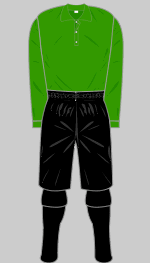
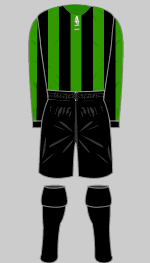
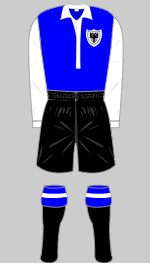

RELATED VIDEO
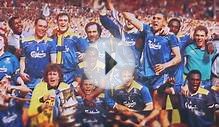
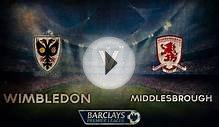
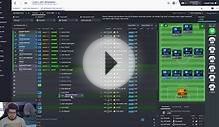
Share this Post
Related posts
Wimbledon AFC
Lyle Taylor scored two times as AFC Wimbledon’s hit power ran Lutton ragged. Photograph: ProSports/Rex/Shutterstock At first…
Read MoreAFC Wimbledon Ladies
It may be something of a fatigued cliché, however the Lionesses have experienced a difficult rollercoaster in the last a…
Read More
